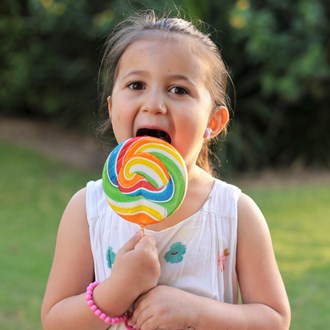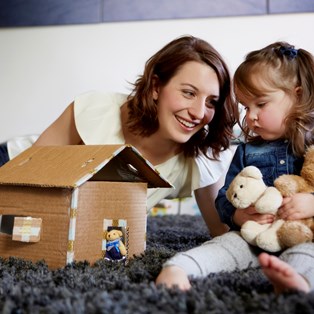Why smacking kids is harmful and doesn’t work

And the positive strategies you can use instead
By Practical Parenting team
November 09 2018
Child experts are strengthening their position on corporal punishment, saying spanking – or smacking – is very harmful, and not an effective way to correct behaviour.
The American Academy of Pedriatrics (AAP) has issued a policy statement saying that discipline strategies should “not involve spanking, other forms of corporal punishment or verbal shaming.
“Aversive disciplinary strategies, including all forms of corporal punishment and yelling at or shaming children, are minimally effective in the short-term and not effective in the long-term,” wrote the study authors.
This also includes avoiding non-physical punishment that is humiliating, scary or threatening.
"In one study, young children who were spanked more than twice a month at age three were more aggressive at age five," a press release accompanying the policy statement said. "Those same children at age nine still exhibited negative behaviors and lower receptive vocabulary scores, according to the research."
“One of the most important relationships we all have is the relationship between ourselves and our parents, and it makes sense to eliminate or limit fear and violence in that loving relationship,” said Dr. Robert D. Sege, a pediatrician and one of the authors of the statement, in an interview with the New York Times.
According to the AAP, using positive discipline strategies can teach children to manage their behavior and keep them from harm while promoting healthy development. These include:
1. Show and tell. Teach children right from wrong with calm words and actions. Model behaviors you would like to see in your children.
2. Set limits. Have clear and consistent rules your children can follow. Be sure to explain these rules in age-appropriate terms they can understand.
3. Give consequences. Calmly and firmly explain the consequences if they don't behave. For example, tell her that if she does not pick up her toys, you will put them away for the rest of the day. Be prepared to follow through right away. Don't give in by giving them back after a few minutes. But remember, never take away something your child truly needs, such as a meal.
4. Hear them out. Listening is important. Let your child finish the story before helping solve the problem. Watch for times when misbehavior has a pattern, like if your child is feeling jealous. Talk with your child about this rather than just giving consequences.
5. Give them your attention. The most powerful tool for effective discipline is attention—to reinforce good behaviors and discourage others. Remember, all children want their parent's attention.
6. Catch them being good. Children need to know when they do something bad--and when they do something good. Notice good behavior and point it out, praising success and good tries. Be specific (for example, "Wow, you did a good job putting that toy away!").
7. Know when not to respond. As long as your child isn't doing something dangerous and gets plenty of attention for good behavior, ignoring bad behavior can be an effective way of stopping it. Ignoring bad behavior can also teach children natural consequences of their actions. For example, if your child keeps dropping her cookies on purpose, she will soon have no more cookies left to eat. If she throws and breaks her toy, she will not be able to play with it. It will not be long before she learns not to drop her cookies and to play carefully with her toys.
8. Be prepared for trouble. Plan ahead for situations when your child might have trouble behaving. Prepare them for upcoming activities and how you want them to behave.
9. Redirect bad behavior. Sometimes children misbehave because they are bored or don't know any better. Find something else for your child to do.
10. Call a time-out. A time out can be especially useful when a specific rule is broken. This discipline tool works best by warning children they will get a time out if they don't stop, reminding them what they did wrong in as few words―and with as little emotion―as possible, and removing them from the situation for a pre-set length of time (1 minute per year of age is a good rule of thumb). With children who are at least 3 years old, you can try letting their children lead their own time-out instead of setting a timer. You can just say, "Go to time out and come back when you feel ready and in control." This strategy, which can help the child learn and practice self-management skills, also works well for older children and teens.













